Matt Rees's Blog, page 3
March 2, 2014
Get my FREE crime fiction ebook
I'm giving away a FREE ebook packed with original, exclusive crime stories. Claim your FREE book here. SHARE THIS to spread the word and help your friends get THEIR ebook.
Published on March 02, 2014 00:04
•
Tags:
book-giveaway, crime-fiction, free-book, free-ebook, thrillers
February 26, 2014
New Mideast thriller parallels mad reality
Dan Williams blows the lid off the Middle East with his new thriller STRIP MINE
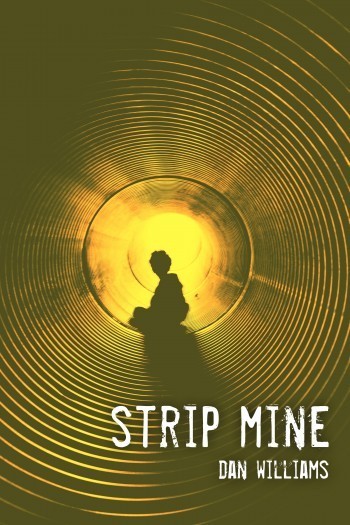
Dan Williams is a leading foreign correspondent covering the Middle East. He also has a profound background in fiction writing which he lets rip in his new novel Strip Mine: A Jodie Moore Thriller. What's it about? Check this out for a fine example of what in the business is called a logline:
"A Mossad spy. A Hamas detective. An unthinkable alliance, to thwart an unthinkable crime."
Try telling me you don't want to read that.
Here Dan writes about how he got the idea for his thriller.
In May 2002 I was among foreign journalists staking out Bethlehem's Church of the Nativity, where a band of Palestinian gunmen were holed up, surrounded by the Israeli military. The siege became almost routine.
Then, something extraordinary happened: A dozen foreign activists dashed across the plaza and right into the church, eluding Israeli troops who had - presumably - sealed off the area long before.
It was one of those double-take moments with which Middle East geopolitics bristles. One of my colleagues turned to me and quipped about the activists: "I bet they're Israeli spies or something, sent in to finish off the resistance."
They weren't, of course, but the idea stayed with me as a kind of parallel perception of what might have happened. And it evolved into a pivotal scene for my novel Strip Mine: A Jodie Moore Thriller .
Seasoned journalists, returning from the field, speak of "emptying their notebooks" onto the page for fresh, first-hand reportage. Perhaps the fiction-writing version of that involves emptying out your imagination - all those shelved conspiracy theories, fancied snippets of conversation, and backstories applied to actual people who, with just a little extra color and contrivance, make great characters.
I worried, for a while, about whether writing the novel necessitated a strict right brain/left brain separation from my journalism - say, by fictionalizing the names and locations of security agencies in Israel or Gaza. I eventually relaxed, realizing that real events in the region were such an unpredictable jumble that they might end up hewing, by sheer happenstance, to my plot.
That happened, arguably, in regards to the theme of Hamas and Israel finding themselves equally challenged by radical Salafist Muslims, or of the Jewish state feeling lethally penned in by sectarian bedlam on its borders.
But things may eventually improve, in which case I hope the book will serve as a snapshot for the Israeli-Palestinian mood at a tumultuous time.
Related articles across the web
 Gaza left out of Mideast peace talks
Gaza left out of Mideast peace talks
 Kerry, Abbas to Discuss Mideast Peace in Paris
Kerry, Abbas to Discuss Mideast Peace in Paris

Dan Williams is a leading foreign correspondent covering the Middle East. He also has a profound background in fiction writing which he lets rip in his new novel Strip Mine: A Jodie Moore Thriller. What's it about? Check this out for a fine example of what in the business is called a logline:
"A Mossad spy. A Hamas detective. An unthinkable alliance, to thwart an unthinkable crime."
Try telling me you don't want to read that.
Here Dan writes about how he got the idea for his thriller.
In May 2002 I was among foreign journalists staking out Bethlehem's Church of the Nativity, where a band of Palestinian gunmen were holed up, surrounded by the Israeli military. The siege became almost routine.
Then, something extraordinary happened: A dozen foreign activists dashed across the plaza and right into the church, eluding Israeli troops who had - presumably - sealed off the area long before.
It was one of those double-take moments with which Middle East geopolitics bristles. One of my colleagues turned to me and quipped about the activists: "I bet they're Israeli spies or something, sent in to finish off the resistance."
They weren't, of course, but the idea stayed with me as a kind of parallel perception of what might have happened. And it evolved into a pivotal scene for my novel Strip Mine: A Jodie Moore Thriller .
Seasoned journalists, returning from the field, speak of "emptying their notebooks" onto the page for fresh, first-hand reportage. Perhaps the fiction-writing version of that involves emptying out your imagination - all those shelved conspiracy theories, fancied snippets of conversation, and backstories applied to actual people who, with just a little extra color and contrivance, make great characters.
I worried, for a while, about whether writing the novel necessitated a strict right brain/left brain separation from my journalism - say, by fictionalizing the names and locations of security agencies in Israel or Gaza. I eventually relaxed, realizing that real events in the region were such an unpredictable jumble that they might end up hewing, by sheer happenstance, to my plot.
That happened, arguably, in regards to the theme of Hamas and Israel finding themselves equally challenged by radical Salafist Muslims, or of the Jewish state feeling lethally penned in by sectarian bedlam on its borders.
But things may eventually improve, in which case I hope the book will serve as a snapshot for the Israeli-Palestinian mood at a tumultuous time.
Related articles across the web
 Gaza left out of Mideast peace talks
Gaza left out of Mideast peace talks  Kerry, Abbas to Discuss Mideast Peace in Paris
Kerry, Abbas to Discuss Mideast Peace in Paris
Published on February 26, 2014 03:02
•
Tags:
crime-fiction, dan-williams, hamas, israel, middle-east, mossad, palestine, thriller
February 24, 2014
Write a thriller: 2 tips to get your book started
Just write, don't wait for inspiration. And understand the 3-Act structure

Nora Roberts (aka J.D. Robb) knows what she's talking about. To get going on your thriller -- or any other kind of writing -- you have to just do it. Don't worry about how it sounds or feels. Just write. She has 209 romance novels and a bunch of crime fiction to her name proving that she's right. The somewhat less prolific Ernest Hemingway said that "first drafts are shit." But all novels have a first draft. So get your Hemingwayesque excrement out there and then you can start to mould it into... Ah, let's move on.
The basic outline of a thriller plot -- or of any other crime story -- looks like this:

The part we're going to chat about in this post is up top:

Why three acts? Shakespeare used five, but three is the way most stories are told today. (I've included the idea of a fourth act, which we'll go into later.) You set things up in Act 1. The hero must push on into the story or something dreadful's going to happen. In Act 2, the hero chases about. The hero tries to figure out what's in his way. In Act 3, the hero knows what he has to do to wrap things up. So he sets about doing it.
We'll move down the plot diagram in the posts I'll be adding to my blog this week. Keep reading.
Related articles across the web
 Tyson Adams' Rules of Thriller Writing
Tyson Adams' Rules of Thriller Writing
 thriller movie conventions
thriller movie conventions
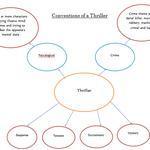 Conventions of a Thriller
Conventions of a Thriller

Nora Roberts (aka J.D. Robb) knows what she's talking about. To get going on your thriller -- or any other kind of writing -- you have to just do it. Don't worry about how it sounds or feels. Just write. She has 209 romance novels and a bunch of crime fiction to her name proving that she's right. The somewhat less prolific Ernest Hemingway said that "first drafts are shit." But all novels have a first draft. So get your Hemingwayesque excrement out there and then you can start to mould it into... Ah, let's move on.
The basic outline of a thriller plot -- or of any other crime story -- looks like this:

The part we're going to chat about in this post is up top:

Why three acts? Shakespeare used five, but three is the way most stories are told today. (I've included the idea of a fourth act, which we'll go into later.) You set things up in Act 1. The hero must push on into the story or something dreadful's going to happen. In Act 2, the hero chases about. The hero tries to figure out what's in his way. In Act 3, the hero knows what he has to do to wrap things up. So he sets about doing it.
We'll move down the plot diagram in the posts I'll be adding to my blog this week. Keep reading.
Related articles across the web
 Tyson Adams' Rules of Thriller Writing
Tyson Adams' Rules of Thriller Writing  thriller movie conventions
thriller movie conventions  Conventions of a Thriller
Conventions of a Thriller
Published on February 24, 2014 02:24
•
Tags:
crime-fiction, j-d-robb, nora-roberts, thrillers, writing, writing-tips
Write a thriller: 2 tips to get your book started
Just write, don't wait for inspiration. And understand the 3-Act structure

Nora Roberts (aka J.D. Robb) knows what she's talking about. To get going on your thriller -- or any other kind of writing -- you have to just do it. Don't worry about how it sounds or feels. Just write. She has 209 romance novels and a bunch of crime fiction to her name proving that she's right. The somewhat less prolific Ernest Hemingway said that "first drafts are shit." But all novels have a first draft. So get your Hemingwayesque excrement out there and then you can start to mould it into... Ah, let's move on.
The basic outline of a thriller plot -- or of any other crime story -- looks like this:

The part we're going to chat about in this post is up top:

Why three acts? Shakespeare used five, but three is the way most stories are told today. (I've included the idea of a fourth act, which we'll go into later.) You set things up in Act 1. The hero must push on into the story or something dreadful's going to happen. In Act 2, the hero chases about. The hero tries to figure out what's in his way. In Act 3, the hero knows what he has to do to wrap things up. So he sets about doing it.
We'll move down the plot diagram in the posts I'll be adding to my blog this week. Keep reading.
Related articles across the web
 Tyson Adams' Rules of Thriller Writing
Tyson Adams' Rules of Thriller Writing
 thriller movie conventions
thriller movie conventions
 Conventions of a Thriller
Conventions of a Thriller

Nora Roberts (aka J.D. Robb) knows what she's talking about. To get going on your thriller -- or any other kind of writing -- you have to just do it. Don't worry about how it sounds or feels. Just write. She has 209 romance novels and a bunch of crime fiction to her name proving that she's right. The somewhat less prolific Ernest Hemingway said that "first drafts are shit." But all novels have a first draft. So get your Hemingwayesque excrement out there and then you can start to mould it into... Ah, let's move on.
The basic outline of a thriller plot -- or of any other crime story -- looks like this:

The part we're going to chat about in this post is up top:

Why three acts? Shakespeare used five, but three is the way most stories are told today. (I've included the idea of a fourth act, which we'll go into later.) You set things up in Act 1. The hero must push on into the story or something dreadful's going to happen. In Act 2, the hero chases about. The hero tries to figure out what's in his way. In Act 3, the hero knows what he has to do to wrap things up. So he sets about doing it.
We'll move down the plot diagram in the posts I'll be adding to my blog this week. Keep reading.
Related articles across the web
 Tyson Adams' Rules of Thriller Writing
Tyson Adams' Rules of Thriller Writing  thriller movie conventions
thriller movie conventions  Conventions of a Thriller
Conventions of a Thriller
Published on February 24, 2014 02:24
•
Tags:
crime-fiction, j-d-robb, nora-roberts, thrillers, writing, writing-tips
February 20, 2014
Plot a thriller with this diagram
The diagram shows the major points in plotting a thriller

This diagram is a framework for writing a thriller. It's based on my experience writing crime fiction and on studying how other writers do it. I'll go into more detail about each of the stages in future posts and I'll add some points to the diagram as we go along. But if you follow this, you'll have a thriller that'll keep you and your readers in a state of tension until the last page. It's a companion piece to my podcast How to Structure and Plot a Book. While you're waiting for my coming posts, come up with a premise for a thriller and see if you can plot out how you'd develop it right through this diagram. Let me know what you come up with.
Related articles across the web
 Podcast: How to structure and plot a book
Podcast: How to structure and plot a book
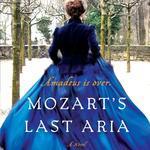 Writing crime fiction: Do you plot or not?
Writing crime fiction: Do you plot or not?
 Six Basic Tips For Writing Thriller Stories
Six Basic Tips For Writing Thriller Stories
 Conventions Of A Thriller Film.
Conventions Of A Thriller Film.
 Thriller conventions
Thriller conventions

This diagram is a framework for writing a thriller. It's based on my experience writing crime fiction and on studying how other writers do it. I'll go into more detail about each of the stages in future posts and I'll add some points to the diagram as we go along. But if you follow this, you'll have a thriller that'll keep you and your readers in a state of tension until the last page. It's a companion piece to my podcast How to Structure and Plot a Book. While you're waiting for my coming posts, come up with a premise for a thriller and see if you can plot out how you'd develop it right through this diagram. Let me know what you come up with.
Related articles across the web
 Podcast: How to structure and plot a book
Podcast: How to structure and plot a book  Writing crime fiction: Do you plot or not?
Writing crime fiction: Do you plot or not?  Six Basic Tips For Writing Thriller Stories
Six Basic Tips For Writing Thriller Stories  Conventions Of A Thriller Film.
Conventions Of A Thriller Film.  Thriller conventions
Thriller conventions
Published on February 20, 2014 00:03
•
Tags:
crime-fiction, how-to-plot, plot, thrillers, writing, writing-tips
February 18, 2014
Writing crime fiction: Character drives plot
Memorable characters are at the heart of crime writing success
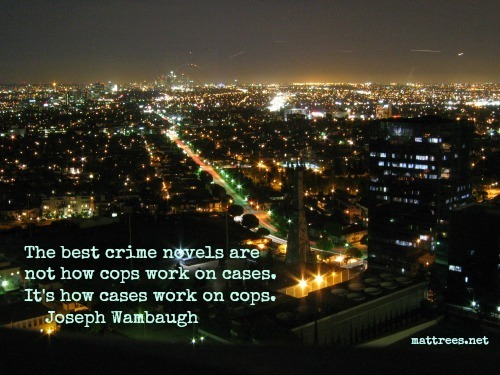
See what I have to say about this idea on my blog.

See what I have to say about this idea on my blog.
Published on February 18, 2014 03:56
•
Tags:
crime-fiction, joseph-wambaugh, writing, writing-tips
February 16, 2014
Who killed Mozart?
Who do you think killed Mozart?
 In my novel Mozart's Last Aria, the great composer's sister Maria Anna travels to Vienna in 1791 to find out who murdered her brother. Many people think the rival composer Salieri did in Wolfgang. That's been popular since Salieri confessed -- except that he was in a madhouse when he owned up and later said he'd been raving. Still it was at the heart of Amadeus and, when I was writing my book, that's what most of my friends assumed I say. But no. I have a different theory. I think the murder was connected to Mozart's activities as a Freemason. In Vienna at that time Freemasonry was illegal. There's also evidence Wolfgang was engaged in espionage, and of course there are signs of something subversive in The Magic Flute... Who do you think killed Mozart?
In my novel Mozart's Last Aria, the great composer's sister Maria Anna travels to Vienna in 1791 to find out who murdered her brother. Many people think the rival composer Salieri did in Wolfgang. That's been popular since Salieri confessed -- except that he was in a madhouse when he owned up and later said he'd been raving. Still it was at the heart of Amadeus and, when I was writing my book, that's what most of my friends assumed I say. But no. I have a different theory. I think the murder was connected to Mozart's activities as a Freemason. In Vienna at that time Freemasonry was illegal. There's also evidence Wolfgang was engaged in espionage, and of course there are signs of something subversive in The Magic Flute... Who do you think killed Mozart?
Related articles across the web
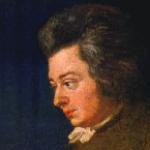 Classical Memories 27 January: Wolfgang Amadeus Mozart
Classical Memories 27 January: Wolfgang Amadeus Mozart
 Mozart's Last Aria
Mozart's Last Aria
 Masonism in Mozart's The Magic Flute
Masonism in Mozart's The Magic Flute
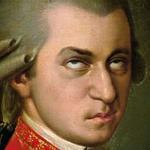 Top Five Myths about Mozart
Top Five Myths about Mozart
 In my novel Mozart's Last Aria, the great composer's sister Maria Anna travels to Vienna in 1791 to find out who murdered her brother. Many people think the rival composer Salieri did in Wolfgang. That's been popular since Salieri confessed -- except that he was in a madhouse when he owned up and later said he'd been raving. Still it was at the heart of Amadeus and, when I was writing my book, that's what most of my friends assumed I say. But no. I have a different theory. I think the murder was connected to Mozart's activities as a Freemason. In Vienna at that time Freemasonry was illegal. There's also evidence Wolfgang was engaged in espionage, and of course there are signs of something subversive in The Magic Flute... Who do you think killed Mozart?
In my novel Mozart's Last Aria, the great composer's sister Maria Anna travels to Vienna in 1791 to find out who murdered her brother. Many people think the rival composer Salieri did in Wolfgang. That's been popular since Salieri confessed -- except that he was in a madhouse when he owned up and later said he'd been raving. Still it was at the heart of Amadeus and, when I was writing my book, that's what most of my friends assumed I say. But no. I have a different theory. I think the murder was connected to Mozart's activities as a Freemason. In Vienna at that time Freemasonry was illegal. There's also evidence Wolfgang was engaged in espionage, and of course there are signs of something subversive in The Magic Flute... Who do you think killed Mozart?Related articles across the web
 Classical Memories 27 January: Wolfgang Amadeus Mozart
Classical Memories 27 January: Wolfgang Amadeus Mozart  Mozart's Last Aria
Mozart's Last Aria  Masonism in Mozart's The Magic Flute
Masonism in Mozart's The Magic Flute  Top Five Myths about Mozart
Top Five Myths about Mozart
Published on February 16, 2014 22:38
•
Tags:
crime-fiction, historical-fiction, mozart, mozart-s-last-aria, mozart-s-sister
Writing crime fiction: Getting into character
A writer must feel what his characters feel to convey the emotion and sensation
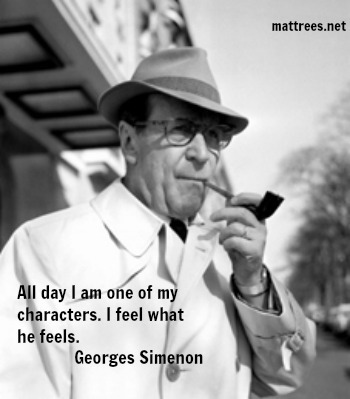 The great Belgian crime noveliest Georges Simenon described writing as exhausting. Not because he worked long hours, but because he inhabited the character about whom he was writing. If the character felt tense, Simenon made himself feel tense. If the character was devastated by some event, Simenon worked himself up into a hell of a state. That way he could write from within the experience. To get what I mean, read The Saint Fiacre Affair, most often published in English under the title Maigret Goes Home
The great Belgian crime noveliest Georges Simenon described writing as exhausting. Not because he worked long hours, but because he inhabited the character about whom he was writing. If the character felt tense, Simenon made himself feel tense. If the character was devastated by some event, Simenon worked himself up into a hell of a state. That way he could write from within the experience. To get what I mean, read The Saint Fiacre Affair, most often published in English under the title Maigret Goes Home
Many writers ignore this vital technique. In fact, when I've described this to other writers and told them that I try to do it, some of them mock the idea. But other creative artists, such as actors, view this technique as the basis of their craft.
In writing MOZART’S LAST ARIA, my historical novel about Mozart’s death, I talked with classical musicians about how they prepare to play. I needed to know this, so I could convey how Nannerl, Mozart’s sister, ought to approach the pieces she plays in the book.
Some classical musicians begin by associating a color with the piece they’re playing. Then they ask themselves, “What season does this make me think of?” Before they play, they’ll have that color and that season in their head. It makes them receptive to the emotion with which they must infuse the piece.
Try doing the same thing when writing. It’ll take you beyond plot and any sense of what the chapter you’re writing ought to be “about” – those are just details — and leave you with the essential emotional content.
Related articles across the web
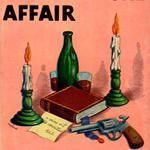 Maigret #13: The Saint-Fiacre Affair by Simenon (Pocket, 1942)
Maigret #13: The Saint-Fiacre Affair by Simenon (Pocket, 1942)
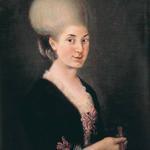 Behind the book: Mozart's Last Aria
Behind the book: Mozart's Last Aria
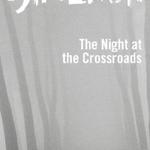 Criminal Minds: Georges Simenon
Criminal Minds: Georges Simenon
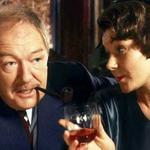 In praise of Georges Simenon's French detective
In praise of Georges Simenon's French detective
 The great Belgian crime noveliest Georges Simenon described writing as exhausting. Not because he worked long hours, but because he inhabited the character about whom he was writing. If the character felt tense, Simenon made himself feel tense. If the character was devastated by some event, Simenon worked himself up into a hell of a state. That way he could write from within the experience. To get what I mean, read The Saint Fiacre Affair, most often published in English under the title Maigret Goes Home
The great Belgian crime noveliest Georges Simenon described writing as exhausting. Not because he worked long hours, but because he inhabited the character about whom he was writing. If the character felt tense, Simenon made himself feel tense. If the character was devastated by some event, Simenon worked himself up into a hell of a state. That way he could write from within the experience. To get what I mean, read The Saint Fiacre Affair, most often published in English under the title Maigret Goes HomeMany writers ignore this vital technique. In fact, when I've described this to other writers and told them that I try to do it, some of them mock the idea. But other creative artists, such as actors, view this technique as the basis of their craft.
In writing MOZART’S LAST ARIA, my historical novel about Mozart’s death, I talked with classical musicians about how they prepare to play. I needed to know this, so I could convey how Nannerl, Mozart’s sister, ought to approach the pieces she plays in the book.
Some classical musicians begin by associating a color with the piece they’re playing. Then they ask themselves, “What season does this make me think of?” Before they play, they’ll have that color and that season in their head. It makes them receptive to the emotion with which they must infuse the piece.
Try doing the same thing when writing. It’ll take you beyond plot and any sense of what the chapter you’re writing ought to be “about” – those are just details — and leave you with the essential emotional content.
Related articles across the web
 Maigret #13: The Saint-Fiacre Affair by Simenon (Pocket, 1942)
Maigret #13: The Saint-Fiacre Affair by Simenon (Pocket, 1942)  Behind the book: Mozart's Last Aria
Behind the book: Mozart's Last Aria  Criminal Minds: Georges Simenon
Criminal Minds: Georges Simenon  In praise of Georges Simenon's French detective
In praise of Georges Simenon's French detective
Published on February 16, 2014 22:37
•
Tags:
georges-simenon, writing, writing-style, writing-tips
February 12, 2014
Writing crime fiction: You need a daily routine for your writing
Crime writers need to work every day at the same time
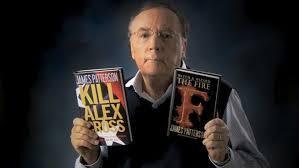
Writing doesn't begin at the moment you set finger to keyboard. It starts...when it starts. To write a crime novel you need to have a routine and stick to it. That means working at the same time every day.
Part of writer's block is the feeling that you could be doing something else right now. If you don't insist on writing every work day, you'll be blocked because your insecurities will push you to do something else. If you don't write at the same time every day, your insecurities will suggest a trip to the coffee shop or a tv show on the basis that you'll find time to write later.
But you shouldn't be, and you won't. The great French novelist Flaubert said, "Be regular and orderly in life, so as to be violent and original in your work."
Whenever you hear a top crime writer talk, someone always asks them about their routine. None of them ever say, I write when I feel inspired.
James Patterson tells us he gets up at 5.30 a.m. to work. (I get up at 5.30, but that's because my two-year-old daughter is demanding pancakes.)
David Liss used to start work at 4 a.m. He happened to be writing two books at the time.
Most writers get going by 9 a.m. and roll until early afternoon. Elmore Leonard used to keep himself hungry by eating a handful of nuts for lunch and writing until 6 p.m.
Certainly the morning seems to be the most popular and productive time for writers. The only writer who seems to choose the evening is George Pelecanos. Zip through this video to 23.35 to hear him talk about this:
Michael Connolly wrote his first novel at night, because he was a newspaper reporter by day and had made a deal with his wife that they wouldn't go out four nights a week so he could write.
Larry McMurtry said that a writer should work every day to maintain momentum. He added that you should stop before you felt played out and exhausted, so that you'd have the energy and appetite to get back at it the next day.
For me, the routine begins every day after I've taken my son to school. By about 8 a.m. I'm working. I keep at it until somewhere between 11 and 2. The end of the day depends on the stage of the novel. If I'm spewing out the first draft, I'll keep going because I'm desperate to get everything down. Once I'm refining the manuscript, I finish a little earlier in the day, because close-reading is relatively exhausting.
But the start of the day is not negotiable for me. It should be that way for you too.
Related articles across the web
 Literary crime fiction
Literary crime fiction
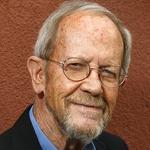 Elmore Leonard, crime novelist, dies
Elmore Leonard, crime novelist, dies
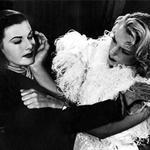 Music to murder to: crime writers on their killer soundtracks
Music to murder to: crime writers on their killer soundtracks

Writing doesn't begin at the moment you set finger to keyboard. It starts...when it starts. To write a crime novel you need to have a routine and stick to it. That means working at the same time every day.
Part of writer's block is the feeling that you could be doing something else right now. If you don't insist on writing every work day, you'll be blocked because your insecurities will push you to do something else. If you don't write at the same time every day, your insecurities will suggest a trip to the coffee shop or a tv show on the basis that you'll find time to write later.
But you shouldn't be, and you won't. The great French novelist Flaubert said, "Be regular and orderly in life, so as to be violent and original in your work."
Whenever you hear a top crime writer talk, someone always asks them about their routine. None of them ever say, I write when I feel inspired.
James Patterson tells us he gets up at 5.30 a.m. to work. (I get up at 5.30, but that's because my two-year-old daughter is demanding pancakes.)
David Liss used to start work at 4 a.m. He happened to be writing two books at the time.
Most writers get going by 9 a.m. and roll until early afternoon. Elmore Leonard used to keep himself hungry by eating a handful of nuts for lunch and writing until 6 p.m.
Certainly the morning seems to be the most popular and productive time for writers. The only writer who seems to choose the evening is George Pelecanos. Zip through this video to 23.35 to hear him talk about this:
Michael Connolly wrote his first novel at night, because he was a newspaper reporter by day and had made a deal with his wife that they wouldn't go out four nights a week so he could write.
Larry McMurtry said that a writer should work every day to maintain momentum. He added that you should stop before you felt played out and exhausted, so that you'd have the energy and appetite to get back at it the next day.
For me, the routine begins every day after I've taken my son to school. By about 8 a.m. I'm working. I keep at it until somewhere between 11 and 2. The end of the day depends on the stage of the novel. If I'm spewing out the first draft, I'll keep going because I'm desperate to get everything down. Once I'm refining the manuscript, I finish a little earlier in the day, because close-reading is relatively exhausting.
But the start of the day is not negotiable for me. It should be that way for you too.
Related articles across the web
 Literary crime fiction
Literary crime fiction  Elmore Leonard, crime novelist, dies
Elmore Leonard, crime novelist, dies  Music to murder to: crime writers on their killer soundtracks
Music to murder to: crime writers on their killer soundtracks
Published on February 12, 2014 04:14
•
Tags:
crime-fiction, elmore-leonard, george-pelecanos, james-patterson, thrillers, writing, writing-routines, writing-tips
February 11, 2014
Writing crime fiction: Readers want someone else's fear, not their own
Writers must find the fears that titillate, rather than terrify.
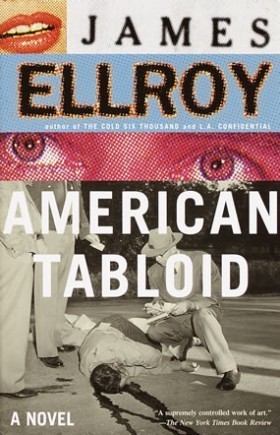 Americans fear public speaking and clowns. (Check out the polls. It’s true.) Surprisingly, they don’t fear being murdered by a psychopath or caught up in a case of mistaken identity which leads to them be pursued by the FBI.
Americans fear public speaking and clowns. (Check out the polls. It’s true.) Surprisingly, they don’t fear being murdered by a psychopath or caught up in a case of mistaken identity which leads to them be pursued by the FBI.
Surprisingly, that is, if you read thrillers.
Crime novels don’t hinge on the fears people confront in everyday life. But six of the current New York Times Top 10 bestseller list are thrillers. Why do so many people read crime novels, if not to experience real fear? You’d better have an answer figured out if you’re going to write a thriller that hits not on people’s true horrors, but on the fears they like to be teased with in literary form.
We can sum up the genre’s popularity this way: our innate conservatism enjoys seeing order disturbed (by murder) and then restored (by nabbing the bad guy.)
Hence the popularity of Scandinavian detective novels. Where else is there such order? The disturbance is consequently great. But we never fear that Wallander or Hole will fail to restore balance, and everyone can head for the sauna with a sense of security.
To prove this, look also at James Ellroy. He has said that his novels are too dark and gritty to have huge sales. His masterpiece American Tabloid has sold less than 400,000 copies. That’s a hell of a lot, of course. But many a lesser thriller writer shifts millions of copies of each book.
Ellroy’s novels are too close to our real fears. I don’t mean clowns. He undercuts the comforting realities of American history. When you read American Tabloid, you can’t help but think that if JFK was such a weak-willed, corrupt poon-hound, maybe all the other myths and foundations of our society are delusions too. There’s no coming back from that. So the sales stay low.
People like to maintain a distinction between fiction and reality.
They recognize the difference between fictional fear and real fear. The shock of 9/11 was, as many witnesses said, that it was “like a Hollywood disaster movie.” Like a fiction. Too much to take in as real. Which is why there was such a backlash against perceived perpetrators. They had killed a lot of people, sure. But they also had shattered our belief in the distinction between reality and nightmare.
Next we’ll try to figure out how to find the fears that titillate, rather than truly terrify. Let me know what fits the bill for you.
Related articles across the web
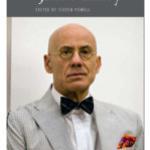 This Changes Everything: Ellroy and Mallon on the Assassination of JFK
This Changes Everything: Ellroy and Mallon on the Assassination of JFK
 James Ellroy and David Peace: History Repeats Itself
James Ellroy and David Peace: History Repeats Itself
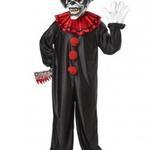 Evil Clown Costumes a Cause of Coulrophobia
Evil Clown Costumes a Cause of Coulrophobia
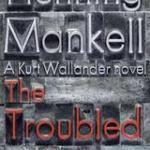 No: 739 The Troubled Man by Henning Mankell
No: 739 The Troubled Man by Henning Mankell
 Americans fear public speaking and clowns. (Check out the polls. It’s true.) Surprisingly, they don’t fear being murdered by a psychopath or caught up in a case of mistaken identity which leads to them be pursued by the FBI.
Americans fear public speaking and clowns. (Check out the polls. It’s true.) Surprisingly, they don’t fear being murdered by a psychopath or caught up in a case of mistaken identity which leads to them be pursued by the FBI.Surprisingly, that is, if you read thrillers.
Crime novels don’t hinge on the fears people confront in everyday life. But six of the current New York Times Top 10 bestseller list are thrillers. Why do so many people read crime novels, if not to experience real fear? You’d better have an answer figured out if you’re going to write a thriller that hits not on people’s true horrors, but on the fears they like to be teased with in literary form.
We can sum up the genre’s popularity this way: our innate conservatism enjoys seeing order disturbed (by murder) and then restored (by nabbing the bad guy.)
Hence the popularity of Scandinavian detective novels. Where else is there such order? The disturbance is consequently great. But we never fear that Wallander or Hole will fail to restore balance, and everyone can head for the sauna with a sense of security.
To prove this, look also at James Ellroy. He has said that his novels are too dark and gritty to have huge sales. His masterpiece American Tabloid has sold less than 400,000 copies. That’s a hell of a lot, of course. But many a lesser thriller writer shifts millions of copies of each book.
Ellroy’s novels are too close to our real fears. I don’t mean clowns. He undercuts the comforting realities of American history. When you read American Tabloid, you can’t help but think that if JFK was such a weak-willed, corrupt poon-hound, maybe all the other myths and foundations of our society are delusions too. There’s no coming back from that. So the sales stay low.
People like to maintain a distinction between fiction and reality.
They recognize the difference between fictional fear and real fear. The shock of 9/11 was, as many witnesses said, that it was “like a Hollywood disaster movie.” Like a fiction. Too much to take in as real. Which is why there was such a backlash against perceived perpetrators. They had killed a lot of people, sure. But they also had shattered our belief in the distinction between reality and nightmare.
Next we’ll try to figure out how to find the fears that titillate, rather than truly terrify. Let me know what fits the bill for you.
Related articles across the web
 This Changes Everything: Ellroy and Mallon on the Assassination of JFK
This Changes Everything: Ellroy and Mallon on the Assassination of JFK  James Ellroy and David Peace: History Repeats Itself
James Ellroy and David Peace: History Repeats Itself  Evil Clown Costumes a Cause of Coulrophobia
Evil Clown Costumes a Cause of Coulrophobia  No: 739 The Troubled Man by Henning Mankell
No: 739 The Troubled Man by Henning Mankell
Published on February 11, 2014 03:07
•
Tags:
crime-fiction, james-ellroy, scandinavian-crime-fiction, thrillers, writing, writing-tips



